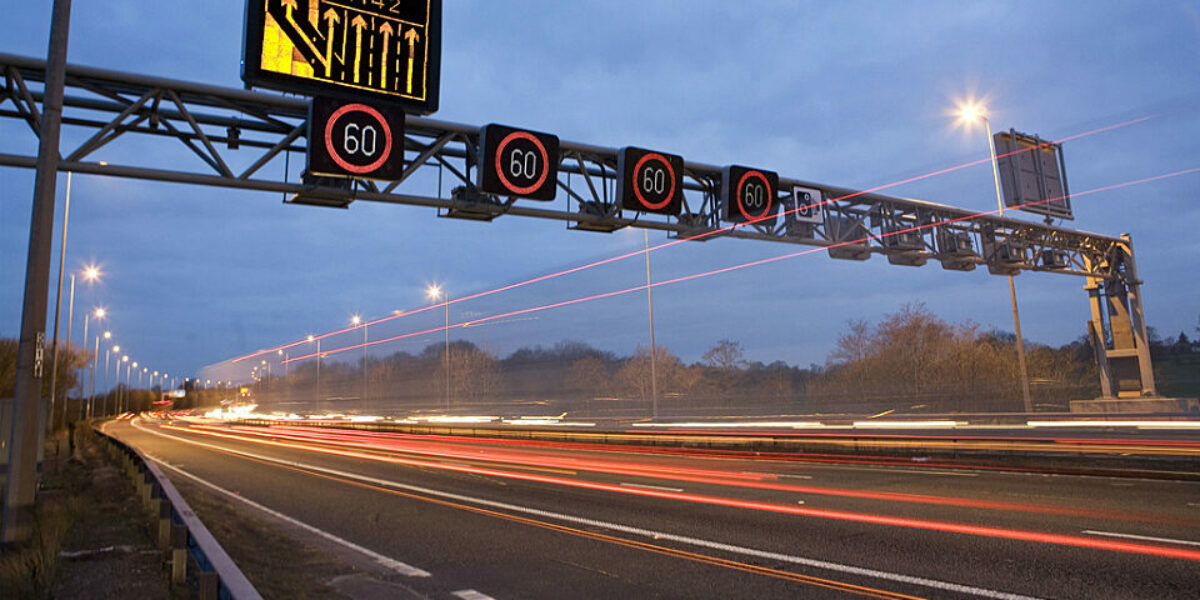Trying to get clever
Smart motorways continue to improve infrastructure
National Highways has stated that progress on smart motorway safety work continues.
Eleven more sections of motorway will be upgraded with extra places to stop in an emergency.
Earlier this year, the Government cancelled plans for any new smart motorways, recognising cost pressures and the lack of confidence felt by some drivers.
Motorway manoeuvres
Smart motorways came under continuous negative comments from road safety experts, motorists and coroners. It followed number of deaths blamed on the repurposed motorways which were designed to increase traffic flow and reduce congestion. However, the removing of sections of hard shoulder continued to be cited as a serious safety concern. These worries were exacerbated by incidents and fatal crashes due to their removal. Furthermore, investigations found that safety camera monitoring systems were out of date, often not working, lacked staff monitoring them, and slow signalling on overhead gantries to warn motorists of carriageway issues.
As part of the design of smart motorways, and in place of the hard shoulder, emergency areas were built in. However, reports stated these were few and far between and more were needed at the very least.
The commitment to construct over 150 additional emergency areas by 2025 was part of the Government’s response to the Transport Select Committee’s report – ‘The roll out and safety of smart motorways’.
In January 2022 the Government committed £390m over the duration of the second Road Investment Strategy to roll out an emergency area retrofit programme. This will see nearly 50% more emergency areas across the ALR network, compared to January 2022.
Improving intelligence
The technology currently used on smart motorways, all focused on drivers, is made up of a system of different features. This is being upgraded and improved to reduce concerns. They include:
- variable speed limits to help keep traffic moving
- enforcement cameras to deter the minority who break speed limits and ignore Red X signals
- clearly signed and orange-colour emergency areas, set back from the road with telephones linking directly to its regional control rooms
- CCTV cameras that operators can remotely move and zoom to monitor and manage congestion and incidents, where notified; the system has the ability to see 100% of the carriageway
- signs and signals to provide better information which can alert drivers to hazard ahead and display Red X signals to close a lane or lanes to other traffic when a stopped vehicle is identified in them and a detection system (MIDAS) to monitor traffic for changes in flows and speeds.
- On all operational ALR motorways stopped vehicle detection technology is also in place to help further reduce the risks associated with live lane stops, and enable National Highways to respond more quickly to help drivers.
National Highways has published the latest progress report.
The ‘Smart motorways stocktake third year progress report’ also sets out the safety evidence (2017 to 2021) for smart motorways.
National Highways Chief Executive, Nick Harris, said: “Safety is our highest priority and we are committed to further improving all lane running motorways. We have completed key upgrades to improve the performance of technology to detect stopped vehicles, and today we have set out the next sections of motorway to benefit from the programme to install more than 150 extra emergency areas to give drivers added reassurance. We are also continuing to invest £105 million to improve the resilience of our operational technology systems.”
Work in progress
Noting the work already completes, the report sets out the next phase.
An additional five emergency areas have already been added on the M6 in Staffordshire. A further eight have been added on the M1 in Bedfordshire and Northamptonshire.
In June, work began on more than doubling the number of emergency areas on the M1 in South Yorkshire between junctions 32 and 35a.
Now, a further 11 locations have been announced for additional emergency areas:
- M1 junctions 16 to 19 in Northamptonshire
- M1 junctions 23a to 25 in Leicestershire & Nottinghamshire
- M1 junctions 28 to 30 in Derbyshire
- M1 junctions 30 to 31 in Derbyshire
- M3 junctions 2 to 4a in Surrey & Hampshire
- M4 junctions 10 to 12 in Berkshire
- M5 junctions 4a to 6 in Worcestershire
- M6 junctions 21a to 26 in Cheshire
- M20 junctions 3 to 5 in Kent
- M25 junctions 5 to 7 in Surrey & Kent
- M27 junctions 4 to 11 in Hampshire
Improving perceptions
National Highways confirmed it has now delivered all the actions set out in the March 2020 Smart Motorway Safety Evidence and Action Plan. This includes achieving the national average 10-minute attendance time for traffic officers on ALR motorways where emergency areas are more than a mile apart.
The report includes the safety evidence (2017 to 2021). Despite the concerns, these show that overall, smart motorways are safer than conventional motorways in terms of deaths or serious injuries.
There is also an investment of £105 million to further improve operational technology on ALR smart motorways. Key upgrades to improve the performance of technology to detect stopped vehicles on motorways without a permanent hard shoulder have already been completed.
Together with better and more signs for emergency areas, and more information about smart motorways online, the aim is to help road users feel more confident in the strategic road network.
More info
The third annual progress report can be found here
Further information on the progress National Highways has made to improve the performance of its radar-based SVD technology on ALR motorways can be found here







